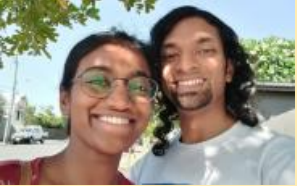Maamakachak Kondamai – By Randika Jayakody & Jerome Perera
Source : Qld Sri Lankan Newsletter – Dæhæna – February 2024
For this article were have decided to write in a little depth about the oldest language in Sri Lanka. This is the languages of the Wanniyala Aeththo, whose communities form the oldest continuing people in Sri Lanka and one of the oldest continuing cultures on earth.
The Wanniyala Aeththo language has no root language and isnot descended from Sanskrit, Dravidian or other established language groupings. I have been learning this beautiful oral language and wanted to share this knowledge with the readers in an applicable way. As this is an oral language, it does not exist in a written form as yet, although some scientific articles exist.
Animate objects suffixed “Aeththo”. Therefore a person is an Aeththa. Animals are also animate objects so a rabbit would be a Bokki-la Aeththa.
Parents are known as Ammila Aeththo and Appila Aeththo. Younger individuals are referred to as Kakula (male) or Kakuli (female).
Readers will notice that the following animal names bear little resemblance to Sinhala, which attests to the uniqueness of the indigenous languages of Sri Lanka. Leopards are Pol-lejja-la aeththo, dogs are Kukkila-aeththo, wild boars are Hotcha digala-aeththo, and deer Kankunala-aeththo. The various types of bees and wasps are known collectively as Macchila-aeththo and honey is known by the endearing term Kandaaraneege Diya Thana.
Inanimate objects are suffixed “Pojja”: Therefore a house is a Rukul-pojja. Trees are referred to as Rukam-pojja and axes are referred to as Gal-raccha. Cutting or severing is described as Pata-harinawa.
Mechanical and technological objects are suffixed of “Yamake”. For example a radio would be Katha damana yamake. Here, readers will notice the introduction of Sinhala words to describe concepts not existing in the Wanniyala Aeththo language. To make an object, obtain a resource or evoke a sentiment is to Mandu-keranna. So to obtain and eat food is kavilaanata mandu keranna. To be happy is sathutu thana mandu wenawa.
The transpiring of an event is known as mangachanawa. So to walk in the forest is kale mangachanna. Directions are denoted by the combination of the direction and the suffix “thana”. For instance something falling from the sky is described as uda thanin mangachanawa.
To denote possession or the passage of time and interactions, the Wanniyala Aeththo utilise words such as thibauwa and annomangachanawa although I am not yet fluent enough to translate these concept into English.
There exist no words for money or numbers, due to the irrelevance of these concepts to traditional life. So money is described in terms of the colour of the note using Sinhala loanwords like dam-kola-pojja for 20 rupees (purple leaf) or nilkola-pojja (blue leaf) for 50 rupee notes. Now let’s put all this knowledge together into a sentence. Me aththa kala-pojje mangachana kaala-machche, gal-raccen rukam-pojjak patahariya.
Rukam-pojje uda thana, me aththa kandaranige diyathana kavilaanata mandu kera.
This translates to: When I walked through a forest, I cut a tree using my axe. I obtained honey from a beehive at the crown of this tree.
As you can see, the Wanniyala Aeththo language is evocatively poetic in its description of natural phenomena as compared to English and Sinhala.
I hope more Sri Lankans learn this beautiful language and help preserve it for future generations.
 Randika Jayakody & Jerome Perera
Randika Jayakody & Jerome Perera
Among Randika and Jerome’s many interests is a deep passion to understand Sri Lankan history and culture.







